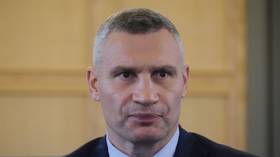India’s landmark Sun probe reaches final destination

India’s first solar observatory, Aditya-L1, has been successfully placed into orbit, the Indian Space Research Organization (ISRO) announced on Saturday.
The mission, which was launched by the ISRO last September, is carrying seven different payloads to observe the light from the Sun and measure the plasma and magnetic fields.
The spacecraft reached Lagrange Point 1 (L1), a relatively stable location for the mission to make observations of the Sun for the next five years.
“What we have achieved today is the exact placement based on our measurement and very correct prediction of the velocity requirement. Right now, in our calculation, it is at the right place, but we are going to monitor for the next few hours to see whether it is at the right place,” ISRO chairman S. Somanath told reporters.
𝐈𝐧𝐝𝐢𝐚, 𝐈 𝐝𝐢𝐝 𝐢𝐭. 𝐈 𝐡𝐚𝐯𝐞 𝐫𝐞𝐚𝐜𝐡𝐞𝐝 𝐭𝐨 𝐦𝐲 𝐝𝐞𝐬𝐭𝐢𝐧𝐚𝐭𝐢𝐨𝐧!Aditya-L1 has successfully entered the Halo orbit around the L1 point.#ISRO#AdityaL1Mission#AdityaL1pic.twitter.com/6gwgz7XZQx
— ISRO InSight (@ISROSight) January 6, 2024
Indian Prime Minister Narendra Modi took to X (formerly Twitter) to congratulate the scientists and hail the “extraordinary feat.”
“India creates yet another landmark. India’s first solar observatory Aditya-L1 reaches its destination. It is a testament to the relentless dedication of our scientists in realizing among the most complex and intricate space missions,” Modi said in the post on Saturday, adding that the “the new frontiers of science” will be pursued for the benefit of mankind.
Aditya-L1 Mission:The SUIT payload captures full-disk images of the Sun in near ultraviolet wavelengthsThe images include the first-ever full-disk representations of the Sun in wavelengths ranging from 200 to 400 nm.They provide pioneering insights into the intricate details… pic.twitter.com/YBAYJ3YkUy
— ISRO (@isro) December 8, 2023
The message was echoed by President Rashtrapati Bhavan, who said the mission “will enhance our knowledge of the Sun-Earth System and benefit the entire humanity,” while celebrating the “significant participation of women scientists.”
Aditya-L1 is a unique spacecraft designed to study all three layers of the Sun, Dr. Krishnaswamy Kasturirangan, the former ISRO chairman, said, explaining that the better solar activity is understood, “the safer are ground-based assets in sectors like telecom, electricity and aviation.”
Through the solar probe, the ISRO will be able to increase its assets in space due to the self-reliance afforded by the program. It will also support the operations of the Indian Air Force to help protect the nation’s space-based assets.





















